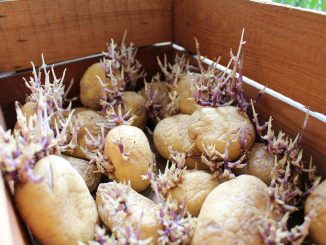
Contents
Time and again, there are warnings about the toxic ingredients in raw elderberries. Here is what you should look out for when preparing and eating them.
Are raw elderberries poisonous or edible? The question always comes up when the small, blackish-purple berries of the black elderberry (Sambucus nigra) and the scarlet berries of the red elderberry (Sambucus racemosa) ripen. Botanically, by the way, these are not berries, but drupes that hang from the bushes from August until late summer. At first glance, the shiny fruits appear very appetizing. Their deep red juice is also very healthy: for example, it is rich in vitamins A, B and C, potassium, and secondary plant compounds that act as natural antioxidants to protect the human body from free radicals.
Can you eat raw elderberries? What you need to know
Elderberry is a natural laxative
Even if they look good enough to eat: Fresh from the bush straight into your mouth, elderberries should only be enjoyed in very small quantities, if at all. Not only the leaves and unripe fruits, but also the seeds of the ripe fruits contain weak toxins: cyanogenic glycosides, also called prussic acid glycosides. One glycoside that is strongly present in elderberries is the so-called sambunigrin. In combination with water, it splits off small amounts of prussic acid, which can lead to gastrointestinal complaints in humans. Adults who only snack on a few elderberries do not usually have to worry about their health. However, children and sensitive people should be careful: For them, eating the raw elderberries can cause nausea, vomiting and diarrhea. By the way, due to the laxative effect, elderberries used to be specifically used as a laxative.
Elderberries can are edible after heating
The good news is that when heated, the toxins break down. In cooked form, therefore, no adverse health effects are to be expected from elderberries. In order for the glycosides to decompose, you should heat the fruit to above 80 °C / 176 °F for at least 20 minutes. There are no limits to the preparation possibilities. Elderberries can be made into jelly, jam or compote. They also taste very good as punch or liqueur. For the cold season, homemade elderberry juice has proven its worth, as it revs up the immune system. It is best to use a steam juicer for this. You should also cook homemade elderflower syrup, even if you only steep the blossoms in sugar water and strain them before further processing.
Red elderberry is more toxic than black elderberry
Anyone who wants to enjoy the fruits of the red elderberry (Sambucus racemosa) should be particularly careful: they contain a higher concentration of toxic substances than the fruits of the black elderberry. Moreover, the poison in the seeds cannot be rendered harmless by heating. You should therefore remove the stone seeds by sieving them out during preparation. The juice can then also be processed into tasty jelly, syrup or liqueur.
When and how to harvest elderberries?
You can start harvesting black elderberries as soon as the fruits have turned blue-black. Depending on the region, this is the case from late July to early August. Cut off the entire fruit umbels and remove spoiled or still unripe fruits. To strip them from the panicles, you can take a fork to help. Be sure to remove all the stems, leaving only the fully ripe berries. Alternatively, you can freeze the fruits along with the cones and simply shake them off when frozen. But even then, heat the elderberries first before enjoying them.




Leave a Reply